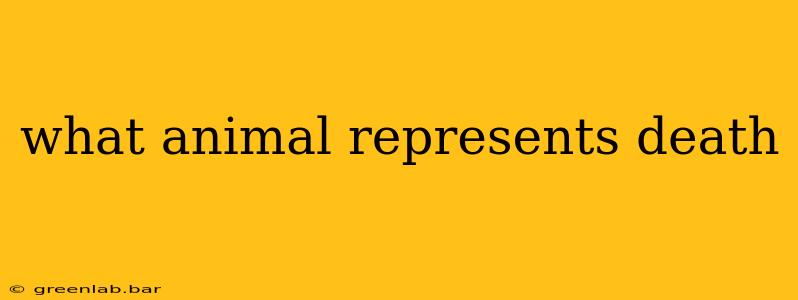The animal kingdom holds a rich tapestry of symbolism, and few concepts are as universally explored as death. Different cultures across the globe have assigned various animals as potent representations of mortality, often reflecting their unique beliefs and perspectives on the afterlife. This exploration delves into the most common animal symbols of death, examining their cultural significance and the reasons behind their association with the end of life.
Common Animals Associated with Death
Several animals consistently appear in cultural narratives as harbingers or symbols of death. Their attributes – physical characteristics, behaviors, or mythological associations – contribute to their symbolic power.
1. Ravens and Crows: Omens of Doom?
Ravens and crows, often conflated, frequently represent death and ill fortune. Their dark plumage, scavenging habits, and haunting calls have contributed to their ominous reputation across many cultures. In some traditions, they are seen as messengers of the gods, delivering news of death. However, in others, their presence simply signifies change, potentially including death but not necessarily. The interpretation often depends on the specific cultural context.
2. Snakes: Transformation and Mortality
Snakes, with their shedding of skin, symbolize transformation and rebirth, but also mortality. Their association with death often stems from their venom and their ability to inhabit hidden places, making them enigmatic and unpredictable. In certain mythologies, snakes guard the underworld or are even considered to be deities of the dead.
3. Owls: Night and the Supernatural
Owls, with their nocturnal habits and piercing gaze, are often associated with the supernatural and, by extension, death. Their silent flight and eerie hooting add to their mysterious aura. While some cultures view owls as wise and protective, many others associate them with death omens or the spirits of the departed.
4. Skeletons and Skulls: The Obvious Representatives
While not strictly animals, skeletons and skulls are perhaps the most universally recognized symbols of death. Their stark representation of the physical remains of a deceased individual serves as a blunt and direct reminder of mortality. Their use in art and cultural practices reinforces their symbolic power.
5. The Grim Reaper's Horse: A Rider's Steed
In Western culture, the Grim Reaper is often depicted riding a black horse. Black horses, throughout history, have often been associated with darkness, death, and the unknown. This association strengthens the visual metaphor of the Grim Reaper and death’s inevitable arrival.
Why These Animals? Understanding the Symbolism
The symbolism attached to these animals isn't arbitrary. Several factors contribute to their association with death:
- Physical Characteristics: Dark colors (black, dark brown), nocturnal habits, sharp features (talons, beaks, fangs), and skeletal structures all contribute to a perception of danger, mystery, and the unknown.
- Behavior: Scavenging, hunting, and the presence of animals in graveyards or near corpses contribute to their association with decay and the end of life.
- Mythological Associations: Many cultures have developed myths and legends that incorporate these animals as messengers of the gods, guardians of the underworld, or personifications of death itself.
Conclusion: Death's Many Faces
The animal kingdom provides a rich source of symbolic representations of death. Understanding the cultural contexts behind these associations reveals a deeper understanding of how different societies perceive and cope with mortality. While some animals represent a purely negative association with death, others embody a more complex narrative that includes transformation, change, and the cycle of life. The continued use of these animal symbols highlights the enduring human fascination with, and attempt to understand, the ultimate mystery of death.

